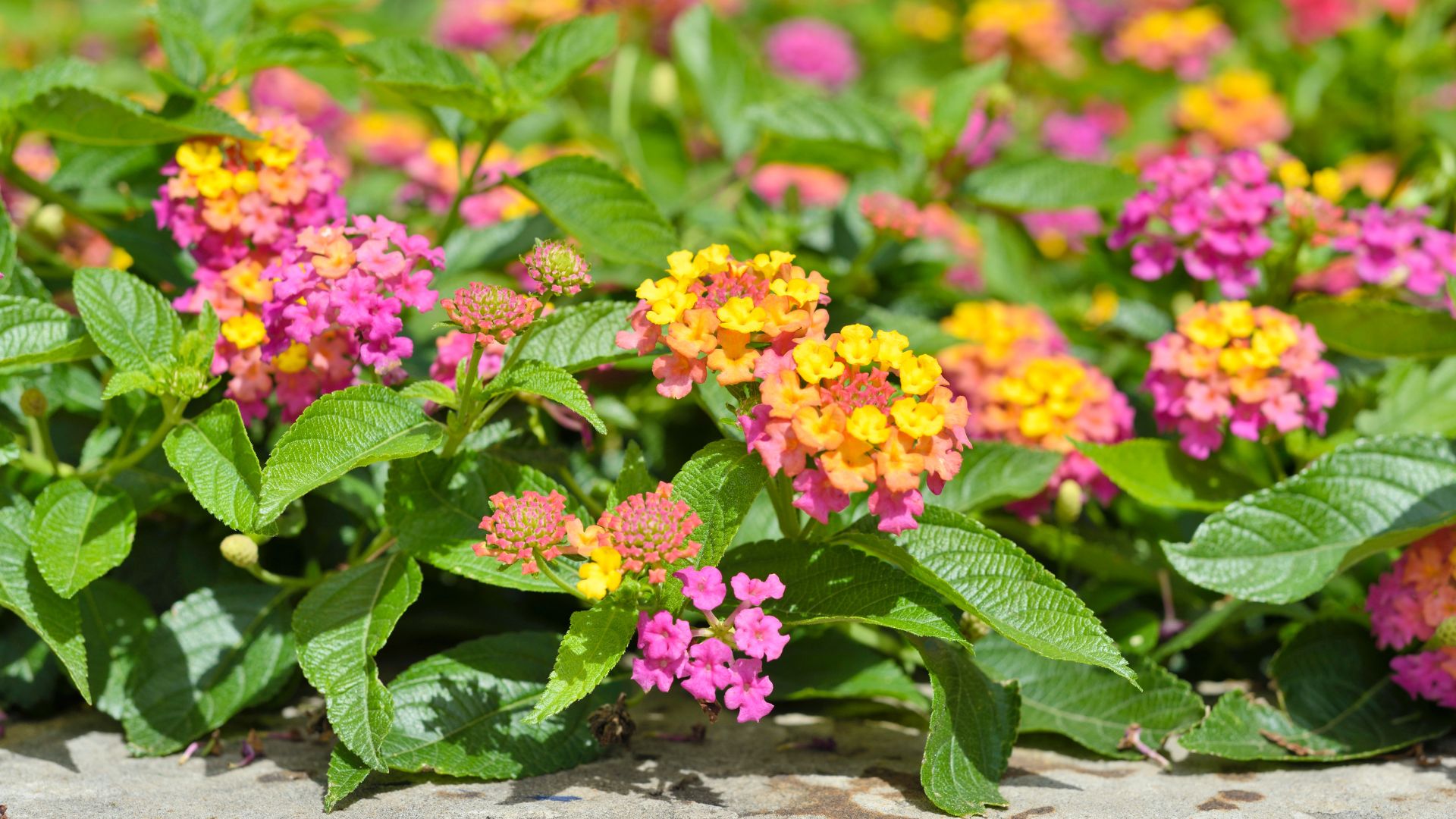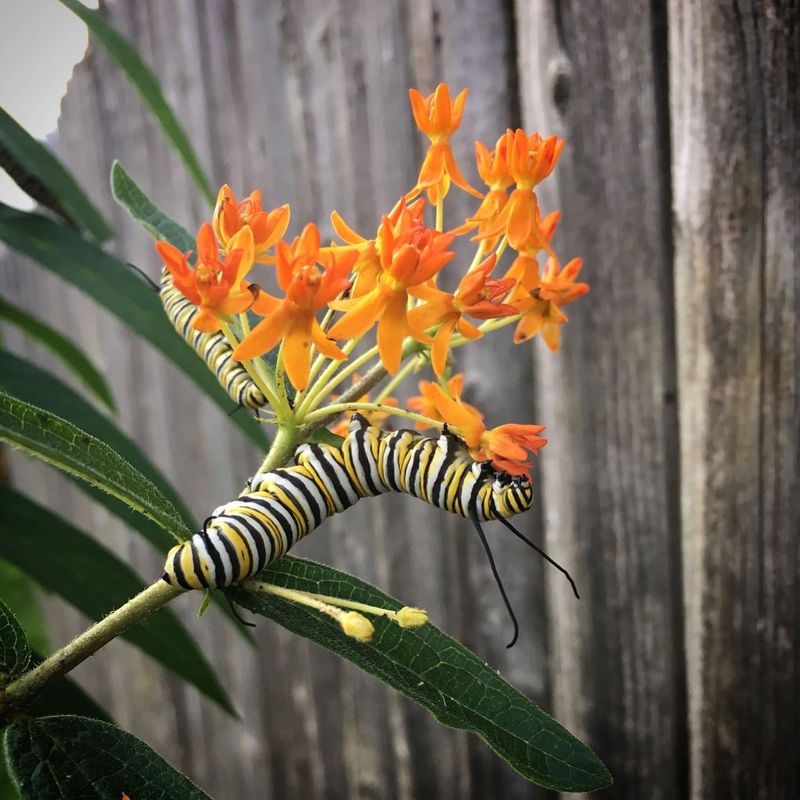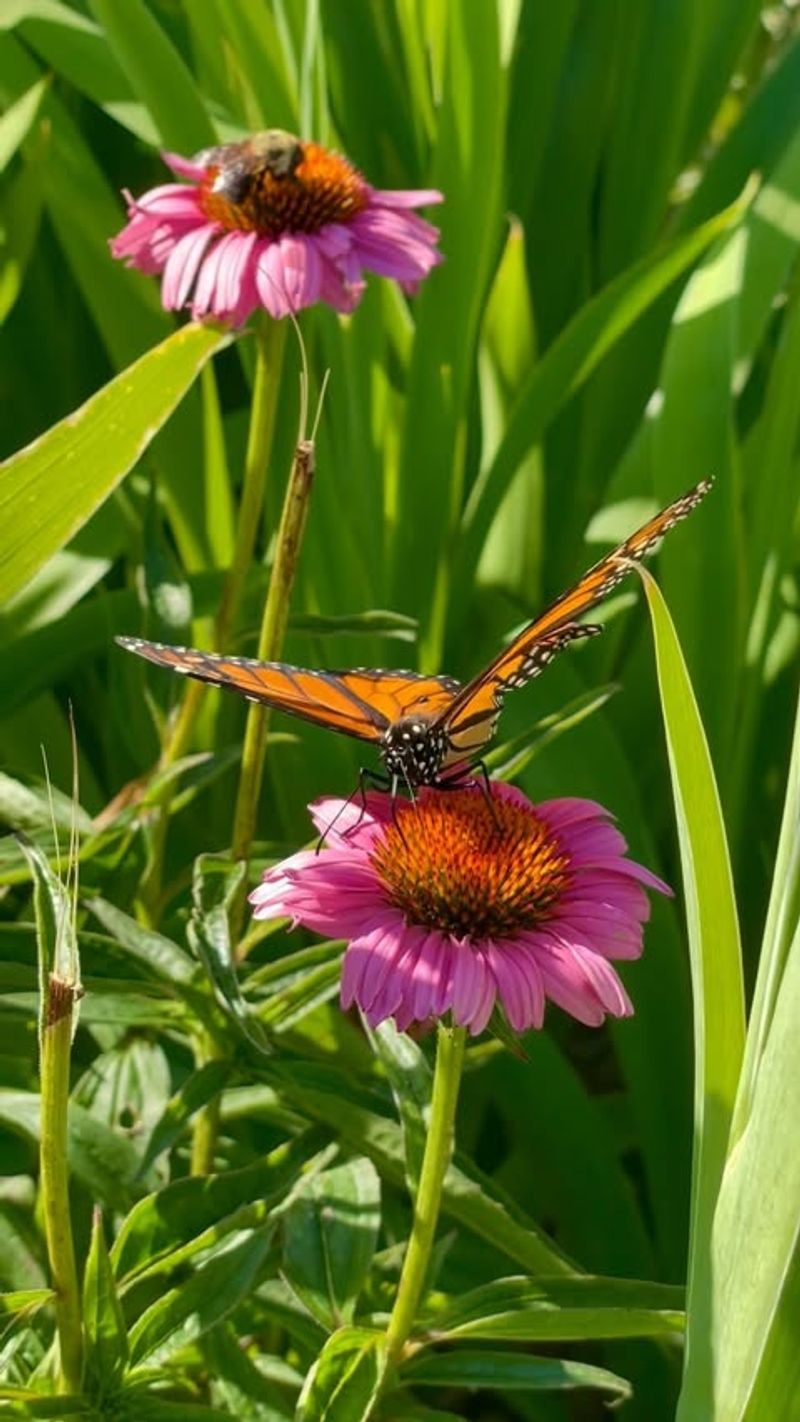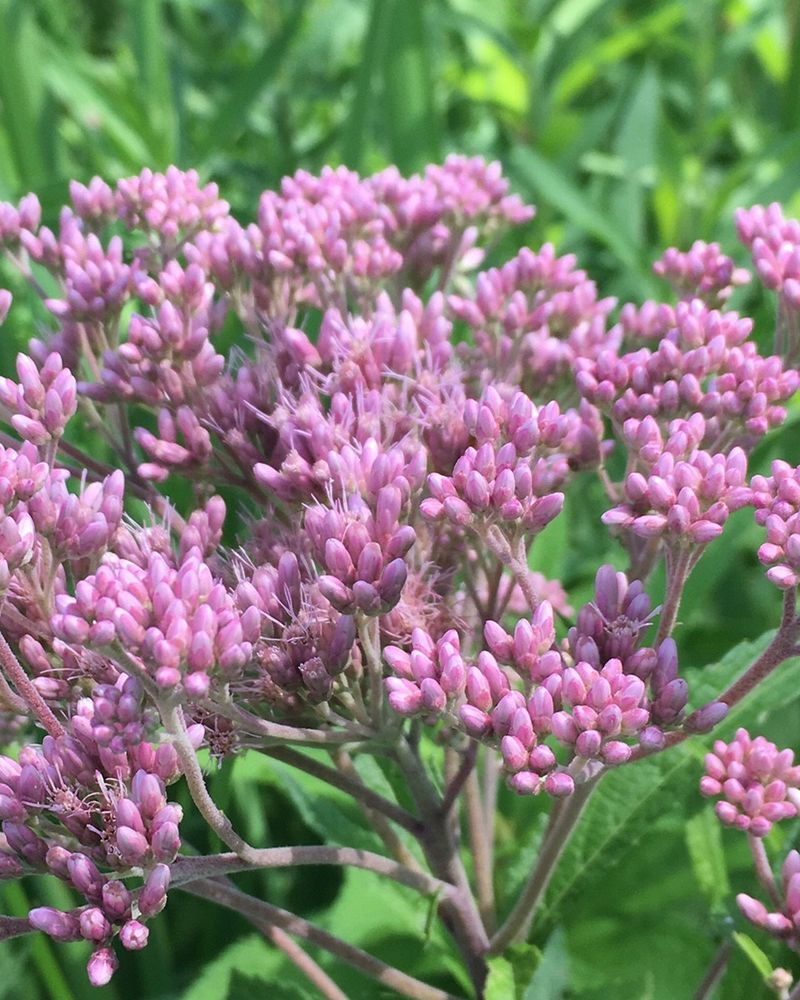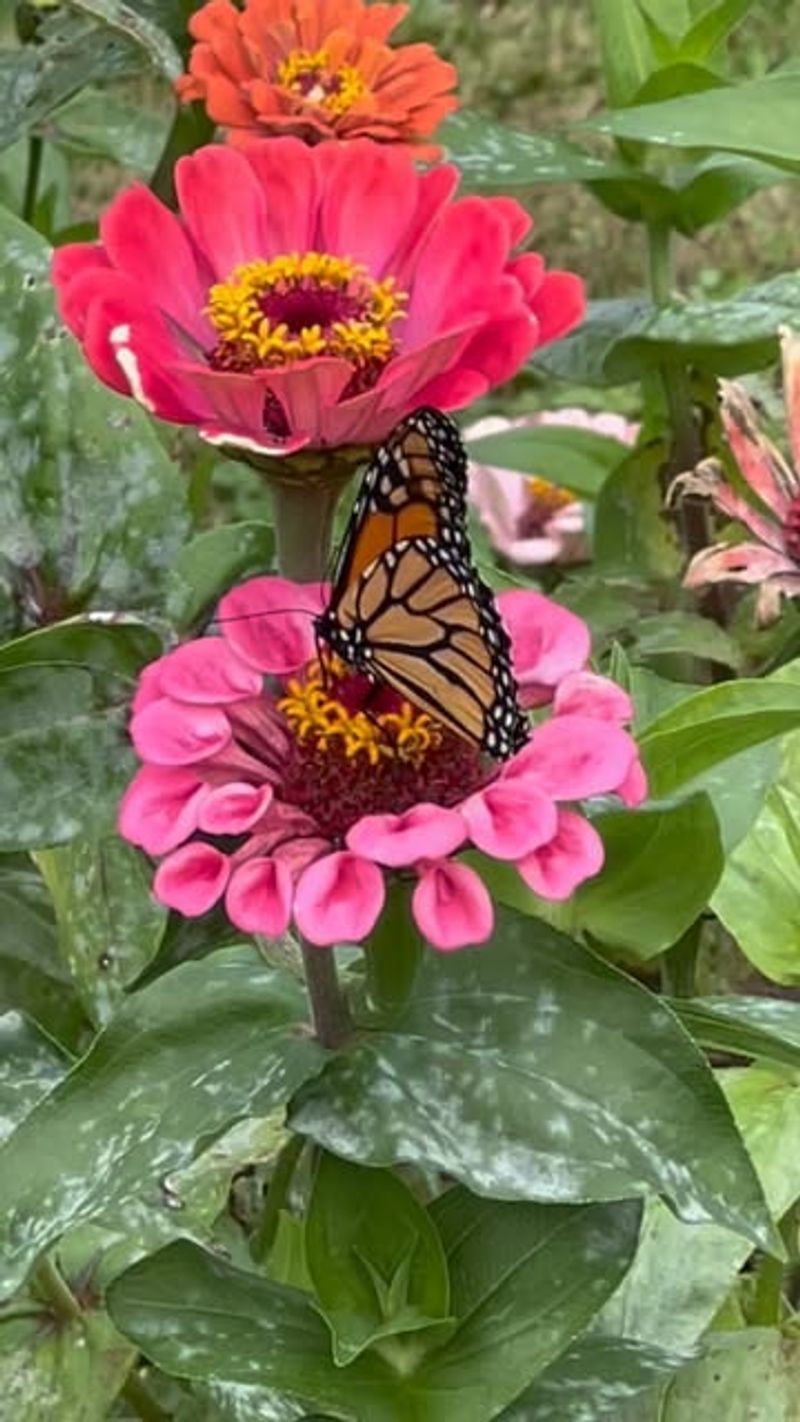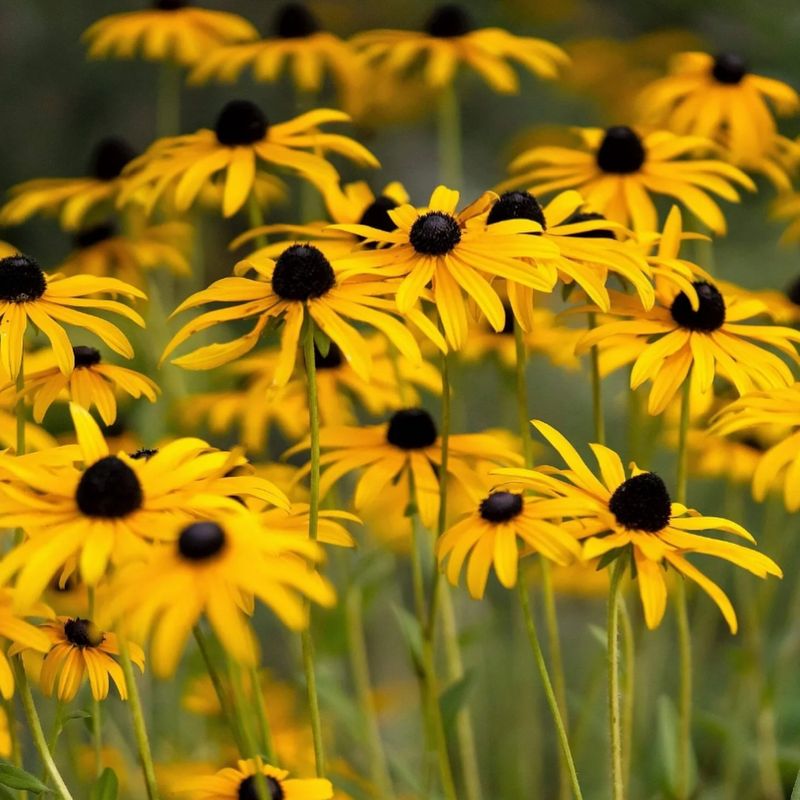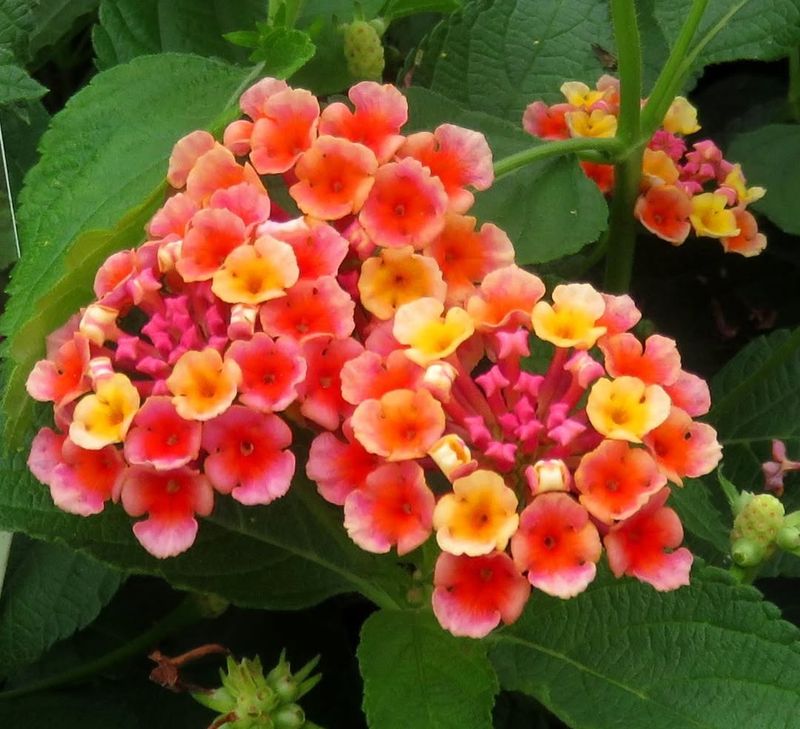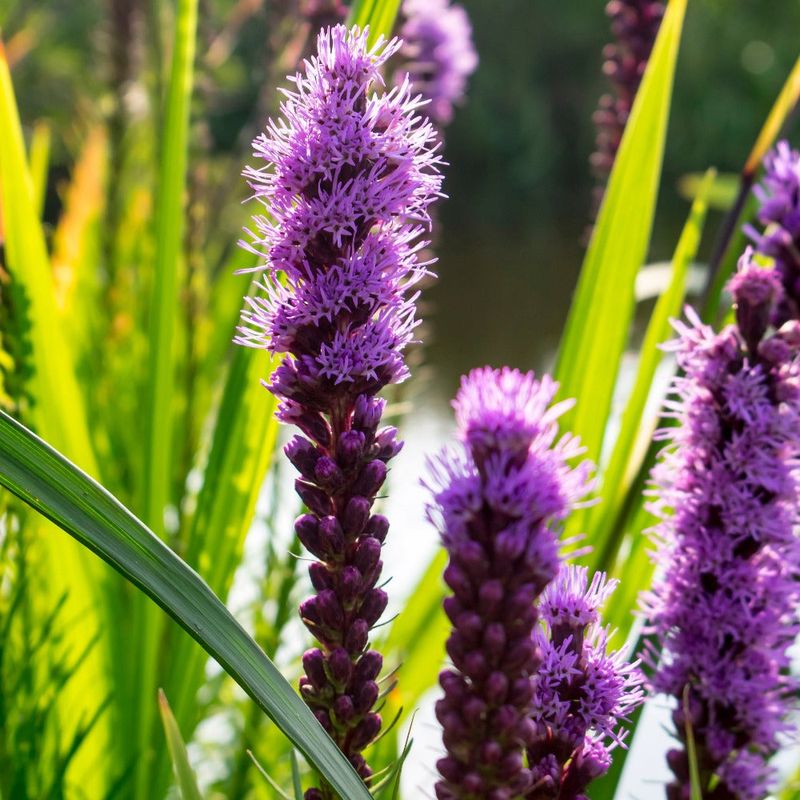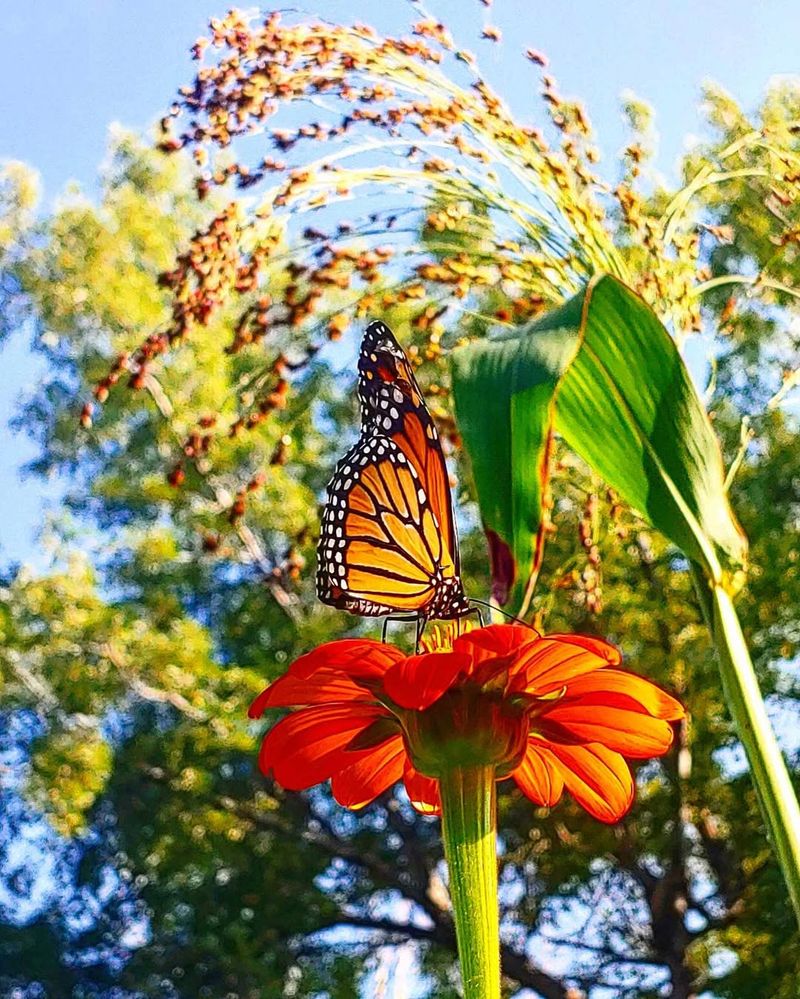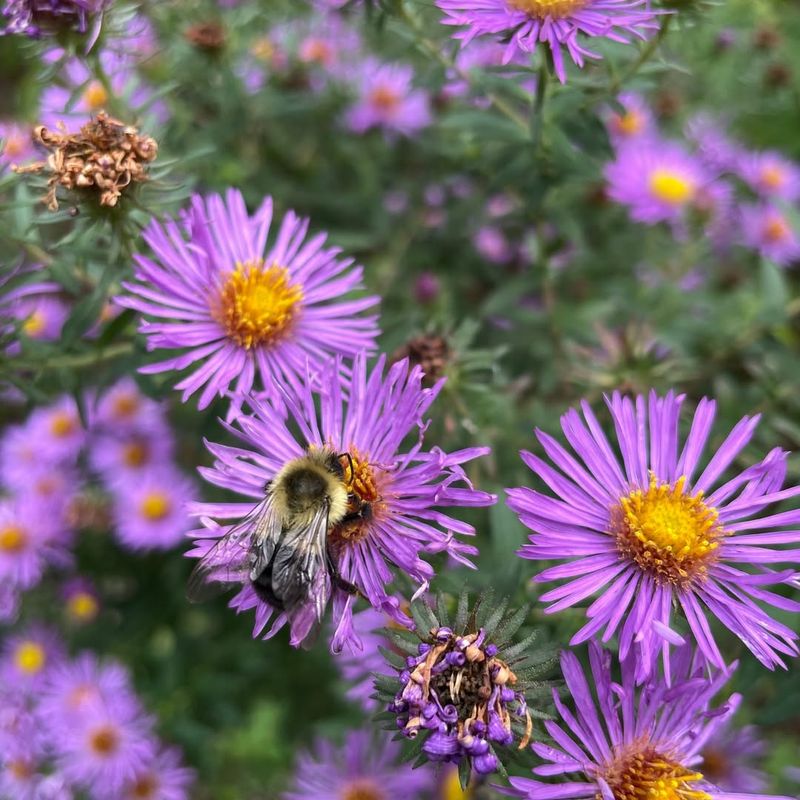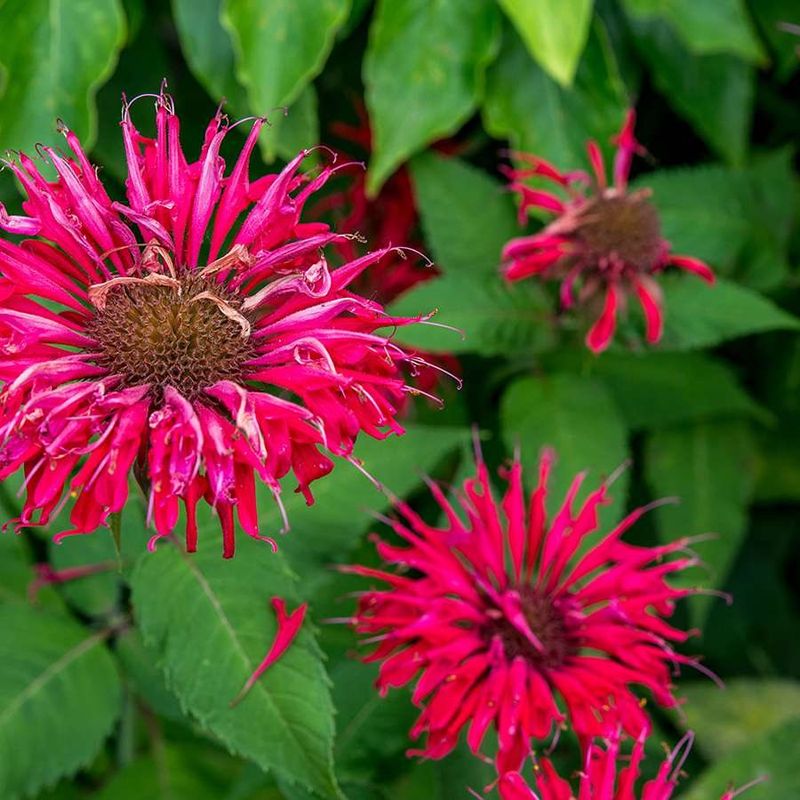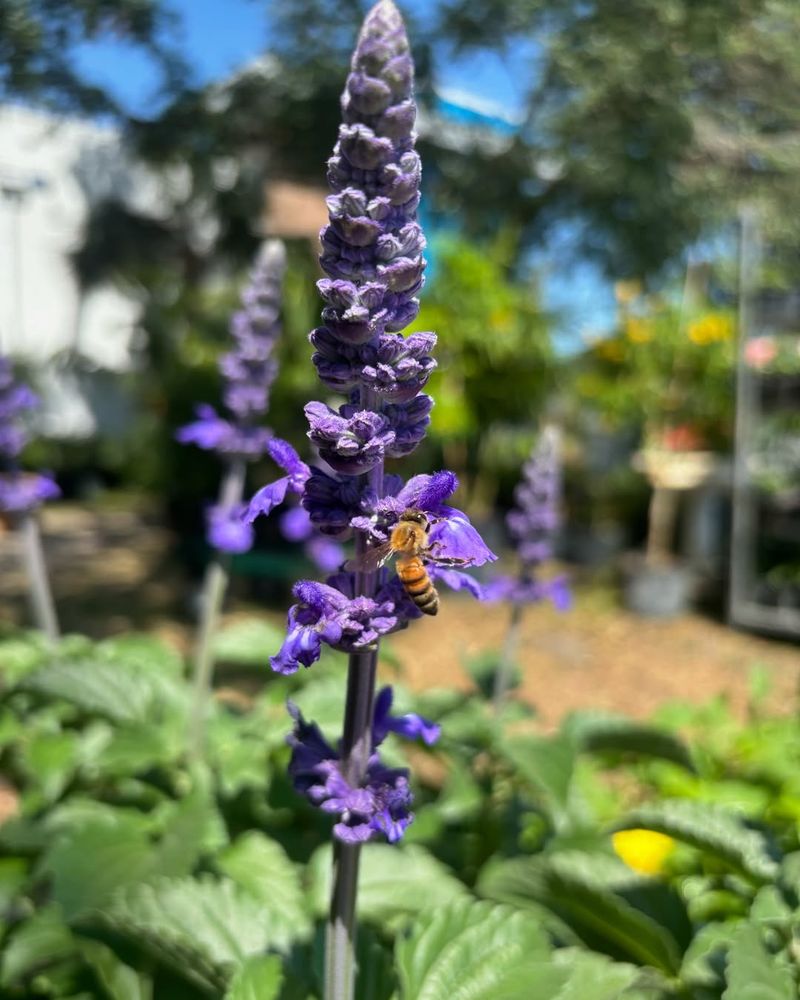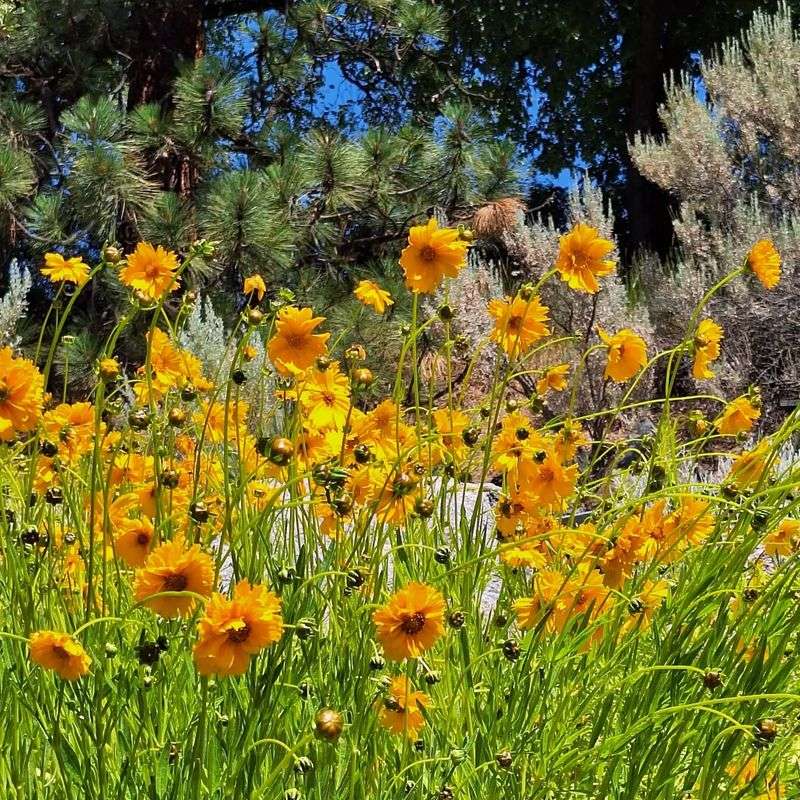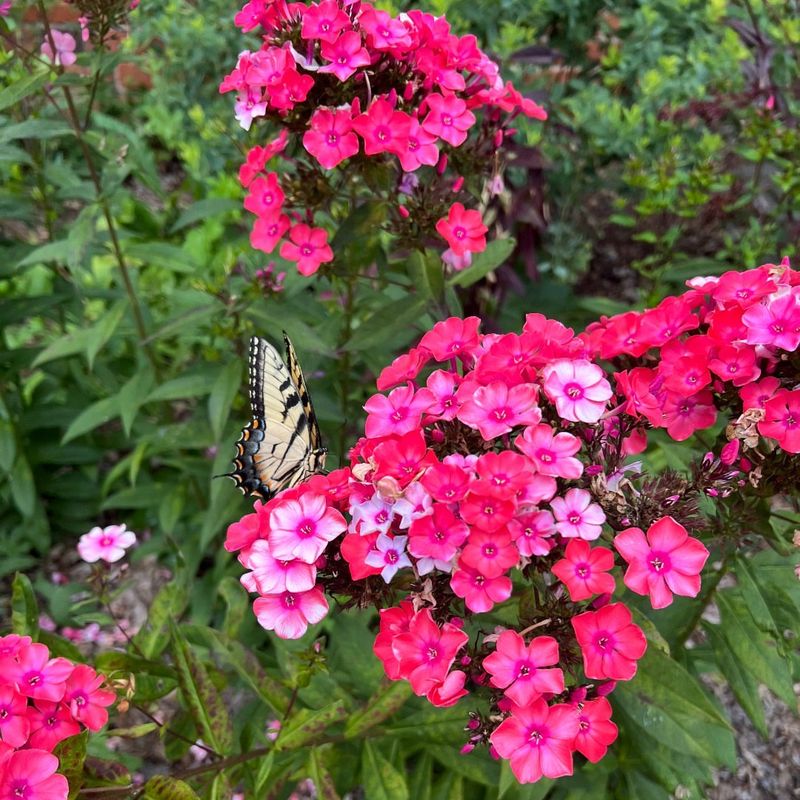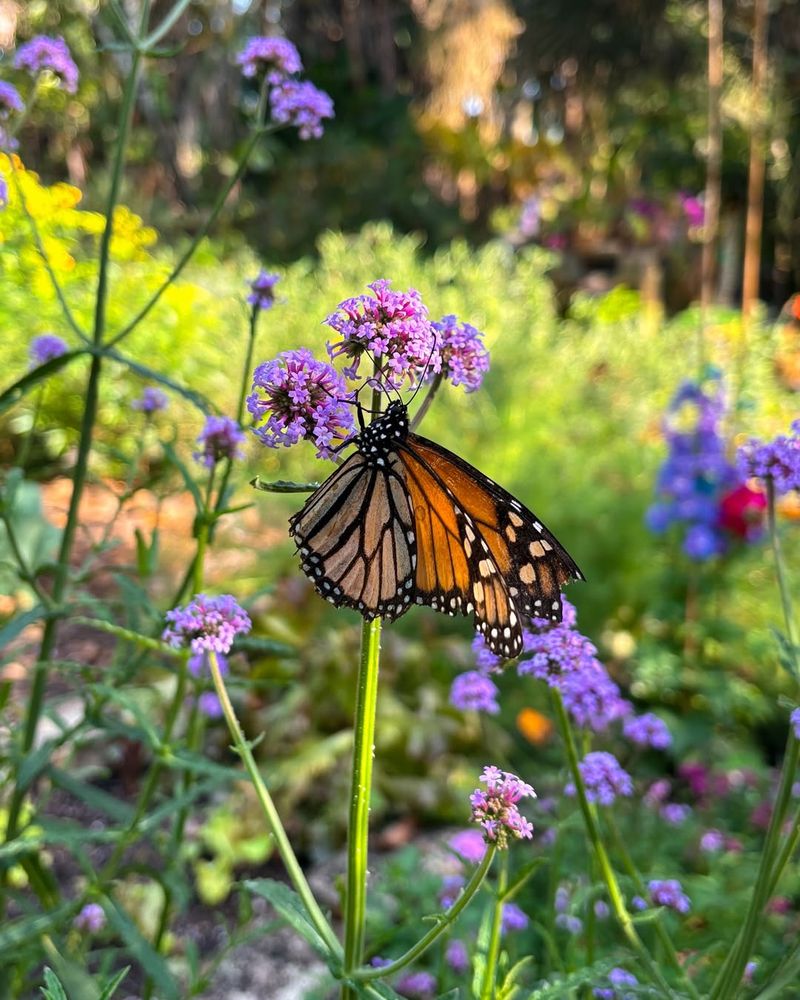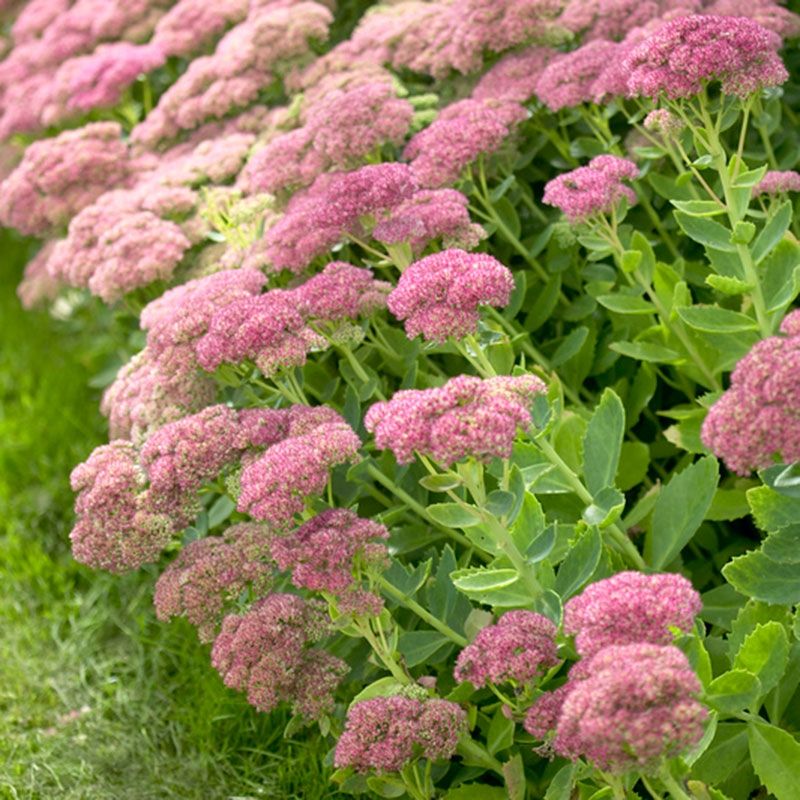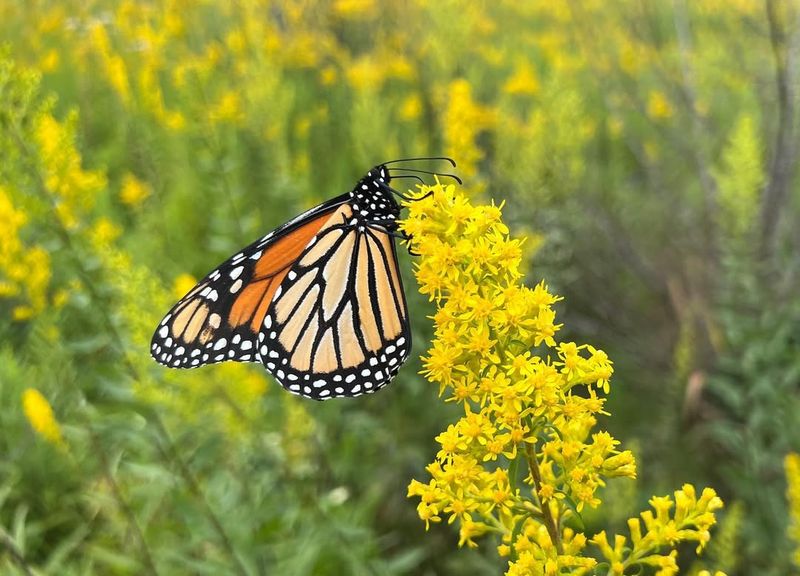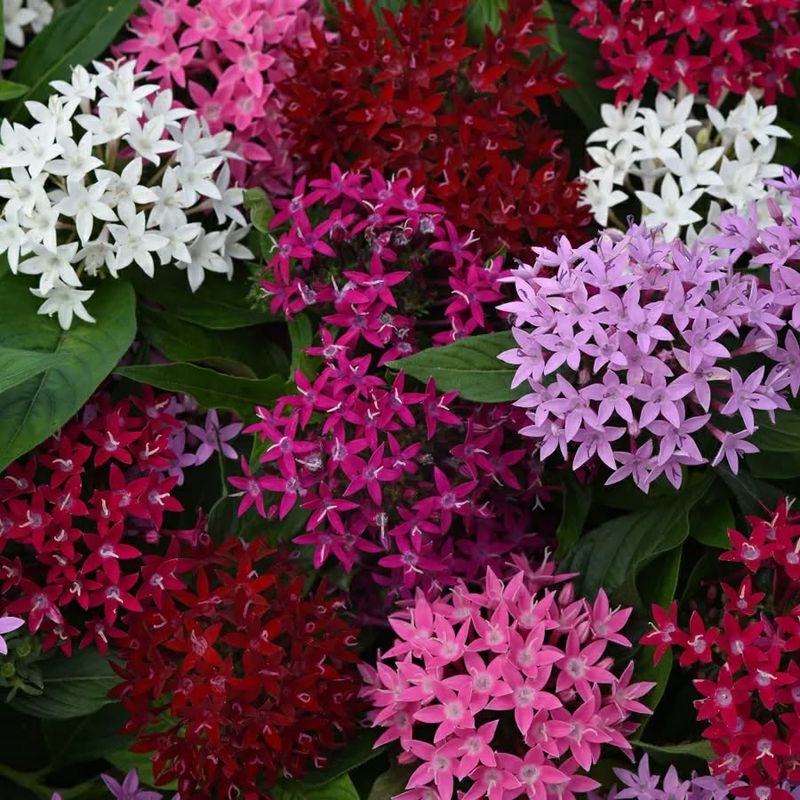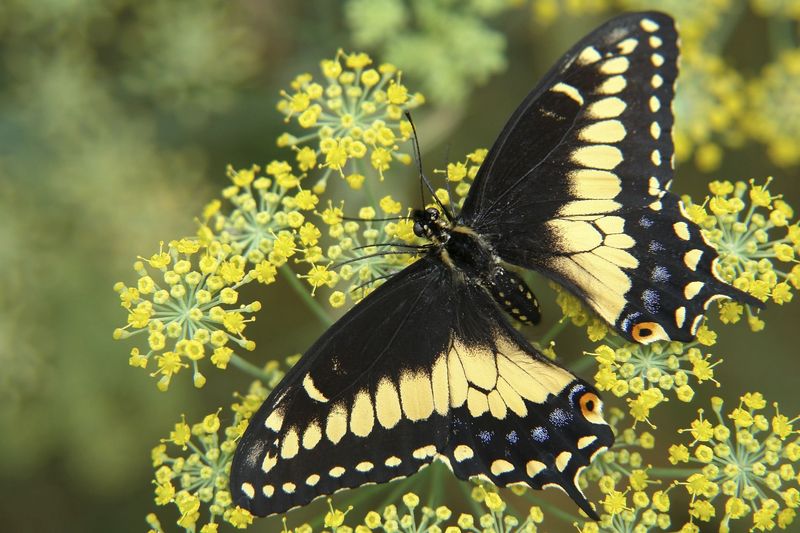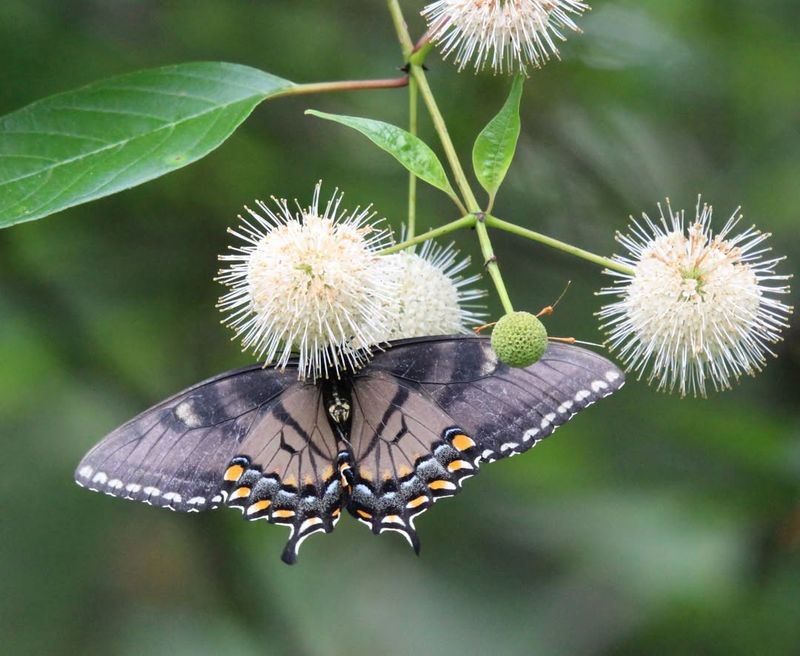There’s something magical about seeing a butterfly flutter through the garden on a sunny afternoon. I used to think you just had to get lucky to spot them, but it turns out you can actually invite them in—if you plant with intention.
By choosing flowers and shrubs that support butterflies from egg to adult, you’re doing more than just adding color—you’re helping an entire little world thrive right outside your door. Nectar-rich blooms, host plants, and a bit of sunny space make all the difference.
Over the years, I’ve added more butterfly favorites to my garden, and now they visit daily. If you’re ready to turn your yard into a butterfly magnet, these 20 plants are a great place to start.
1. Butterfly Bush
Long, cone-shaped flower clusters produce massive amounts of nectar that butterflies simply can’t resist. The sweet scent attracts dozens of species, from Monarchs to Painted Ladies.
I’ve noticed butterflies visiting my butterfly bush within days of planting it. The purple, pink, or white blooms appear from summer through fall, providing a reliable food source when other plants have stopped flowering.
Plant in full sun and well-drained soil for best results. Though drought-tolerant once established, regular watering helps produce more flowers and keeps butterflies coming back.
2. Milkweed
Without this essential plant, Monarch butterflies couldn’t complete their life cycle. Female Monarchs lay eggs exclusively on milkweed because it’s the only food their caterpillars can eat.
The milky sap contains compounds that make caterpillars toxic to predators, protecting them as they grow. Native varieties like common milkweed (A. syriaca) or swamp milkweed (A. incarnata) support local ecosystems better than tropical varieties.
For me, watching the entire Monarch life cycle unfold on my milkweed plants has been one of gardening’s greatest rewards.
3. Purple Coneflower
Daisy-like flowers with raised centers create perfect landing pads for butterflies to rest while feeding. Native to North American prairies, these tough perennials handle heat, drought, and poor soil with ease.
Beyond attracting butterflies, coneflowers support native bees and goldfinches, who feast on the seeds. The plants self-seed readily, creating natural colonies that expand year after year.
Leave the seed heads standing through winter instead of deadheading for continued wildlife support and beautiful winter interest in your garden.
4. Joe-Pye Weed
Towering flower clusters reaching 5-7 feet tall create butterfly magnets in late summer when many other plants have finished blooming. The mauve-pink flowers attract dozens of butterfly species, especially swallowtails.
Despite its name, this native plant isn’t a weed at all, but a valuable garden perennial. The vanilla-scented flowers complement ornamental grasses and late-season bloomers like asters and goldenrod.
Plant in moist areas of your garden where many other perennials struggle. Joe-Pye thrives in those challenging spots, turning problem areas into butterfly paradises.
5. Zinnia
Annual flowers with the power to attract butterflies within hours of planting make zinnias perfect for gardeners seeking instant results. The flat, daisy-like blooms provide easy landing platforms for butterflies to rest while feeding.
Available in nearly every color except blue, zinnias work in any garden color scheme. Single-flowered varieties allow butterflies easier access to nectar than double-flowered types.
Starting from seed is remarkably easy—simply press seeds into warm soil after frost danger passes. They’ll bloom from summer until the first frost with minimal care.
6. Black-Eyed Susan
Golden daisy-like flowers with distinctive dark centers bloom for months, providing consistent nectar sources from midsummer through fall. These native wildflowers establish quickly and spread reliably without becoming invasive.
Heat tolerance makes them perfect for hot, sunny spots where other perennials struggle. The bright flowers contrast beautifully with purple blooms like salvia or catmint in garden designs.
Last year, I counted five different butterfly species visiting my black-eyed Susans on a single August afternoon. Their drought resistance means they keep flowering even during dry spells when butterflies need nectar most.
7. Lantana
Clusters of tiny flowers in multiple colors create miniature bouquets that butterflies find irresistible. Each cluster often contains several colors at once—yellow, orange, pink, and red—creating a kaleidoscope effect in the garden.
Heat and drought tolerance make lantana perfect for hot, sunny locations where other plants struggle. In warm climates, it grows as a woody perennial; in colder areas, it’s treated as an annual.
The nectar-rich flowers attract an astonishing variety of butterflies, from tiny skippers to large swallowtails. Just be aware that all parts of the plant are toxic if ingested.
8. Blazing Star
Tall purple spikes create vertical interest while providing butterfly feeding stations from bottom to top. Unlike most flowers that bloom from the outside in, blazing stars bloom from the top down, extending the nectar season.
Native to North American prairies, these tough perennials thrive in full sun and average to poor soil. Their deep taproots make them incredibly drought-resistant once established.
The unique flower structure provides perfect perches for butterflies, who can rest comfortably while feeding. I’ve found that planting them in groups of 5-7 creates the most dramatic display and attracts the most pollinators.
9. Mexican Sunflower
Fiery orange blooms on tall stems create butterfly feeding stations that tower above other garden plants. Monarchs show particular preference for these flowers during their fall migration, using them as fueling stations.
Growing up to 6 feet tall in a single season from seed, Mexican sunflowers create dramatic backdrops for smaller butterfly plants. The velvety leaves and stems have a distinctive appearance unlike any other garden annual.
Heat and drought tolerance make them perfect for hot, sunny spots. They bloom continuously from midsummer until frost without deadheading, providing reliable nectar sources when butterflies need it most.
10. Aster
Fall-blooming flowers provide critical nectar when most garden plants have finished flowering. This makes asters essential for migrating Monarchs and other late-season butterflies preparing for winter.
Native varieties support local ecosystems better than cultivated types. New England aster (S. novae-angliae) and New York aster (S. novi-belgii) attract the widest variety of butterfly species.
The daisy-like flowers in purple, pink, or white complement autumn garden colors perfectly. Plant near ornamental grasses for a natural meadow look that butterflies find irresistible during their fall migrations.
11. Bee Balm
Unusual whorled flowers in red, pink, or purple create perfect landing platforms for butterflies while adding architectural interest to garden designs. Native to eastern North America, bee balm attracts an impressive variety of pollinators.
Beyond butterfly appeal, the aromatic leaves make wonderful herbal tea. Crushing a leaf releases a spicy, citrusy scent reminiscent of Earl Grey tea.
Newer cultivars like ‘Jacob Cline’ and ‘Raspberry Wine’ offer improved resistance to powdery mildew, which can affect older varieties in humid climates. Planting in locations with good air circulation helps prevent disease issues.
12. Salvia
Tubular flowers in spikes provide perfect feeding stations for butterflies with long proboscises. Different species bloom from spring through fall, creating season-long nectar sources in various colors.
Both annual and perennial varieties attract butterflies. May Night, Hot Lips, and Black & Blue are particularly magnetic to pollinators. The aromatic foliage deters deer and rabbits while attracting beneficial insects.
Salvias need minimal care once established, making them perfect for busy gardeners. Most varieties thrive in full sun and average soil, tolerating drought conditions that would stress other flowering plants.
13. Coreopsis
Cheerful daisy-like flowers bloom for months with minimal care, providing consistent nectar sources throughout summer. Native varieties like C. lanceolata and C. verticillata support local butterfly populations better than cultivated types.
The plants form tidy mounds that work well in borders, containers, or meadow plantings. Most varieties self-seed gently without becoming invasive, creating sustainable butterfly habitats.
Deadheading spent blooms extends the flowering season, though leaving some seed heads provides food for goldfinches and other birds. The combination of butterfly and bird support makes coreopsis a wildlife garden essential.
14. Phlox
Fragrant flower clusters in white, pink, purple, or bicolor provide rich nectar sources from midsummer through early fall. The sweet scent attracts numerous butterfly species, especially swallowtails and fritillaries.
Garden phlox creates perfect middle-of-border height at 3-4 feet tall. Newer mildew-resistant varieties like ‘David’ and ‘Glamour Girl’ perform better in humid climates than older types.
Every summer, the phlox in my garden becomes a butterfly meeting place, with different species gathering to feed together. The plants divide easily every few years, allowing you to spread butterfly habitat throughout your garden.
15. Verbena
Airy purple flower clusters on tall, nearly leafless stems create floating butterfly platforms throughout the garden. The see-through quality allows planting behind shorter flowers without blocking their view.
Growing 3-4 feet tall but just inches wide, verbena fits into the smallest garden spaces. The self-seeding nature creates sustainable butterfly habitats that return year after year with zero effort.
The long bloom period from summer through fall provides consistent nectar when many other plants have finished flowering. Butterflies particularly appreciate the flat flower clusters, which provide easy landing pads while feeding.
16. Sedum
Flat-topped flower clusters in dusty pink or red appear in late summer when many other plants have finished blooming. The succulent leaves provide interesting texture year-round, even when not in flower.
Extremely drought-tolerant once established, sedums thrive in poor soil where many other perennials struggle. The flowers evolve through several color phases, extending their ornamental and wildlife value.
Leave the dried flower heads standing through winter for extended garden interest. The dried seed heads look beautiful frosted with snow while providing winter shelter for beneficial insects.
17. Goldenrod
Contrary to popular belief, goldenrod doesn’t cause hay fever—that’s ragweed! These golden late-summer bloomers provide essential nectar for migrating Monarchs and other fall butterflies.
Native varieties support local ecosystems better than cultivated types. Garden-friendly species like S. rugosa ‘Fireworks’ and S. sphacelata ‘Golden Fleece’ stay compact and well-behaved.
The bright yellow flowers complement purple asters and blue salvias perfectly in fall garden designs. Plant goldenrod in masses for the most dramatic effect and strongest butterfly attraction during crucial migration periods.
18. Pentas
Star-shaped flowers in clusters provide landing pads and nectar sources that butterflies find irresistible. Available in red, pink, white, and purple, these tropical-looking plants bloom continuously from spring until frost.
Heat tolerance makes pentas perfect for hot summer gardens when many other flowers stop blooming. In warm climates, they grow as perennials; in colder areas, they’re treated as annuals or container plants.
The flowers’ tubular structure makes them perfect for butterflies with long proboscises, like swallowtails. Their non-stop blooming habit ensures continuous nectar sources throughout the growing season.
19. Dill
Feathery foliage and yellow flower umbels serve double duty—feeding both adult butterflies and their caterpillars. Black swallowtail butterflies lay eggs specifically on dill, parsley, and other members of the carrot family.
The culinary benefits add extra value to this butterfly plant. Fresh dill enhances everything from fish dishes to pickles while supporting pollinators in your garden.
Allow some plants to flower and self-seed for continuous butterfly support. The airy structure (2-3 feet tall) works well as a filler among more structured garden plants, creating a meadow-like effect butterflies love.
20. Buttonbush
Unusual spherical white flowers resembling pincushions create conversation pieces that butterflies find irresistible. Native to wetland edges throughout eastern North America, buttonbush thrives in moist areas where many plants struggle.
Growing as a large shrub (6-12 feet), buttonbush creates structural backbone for butterfly gardens while providing abundant nectar. The distinctive round seedheads add winter interest after the flowers fade.
Beyond butterflies, the fragrant flowers attract beneficial insects that help control garden pests naturally. The ability to handle occasional flooding makes buttonbush perfect for rain gardens or poorly drained areas.

